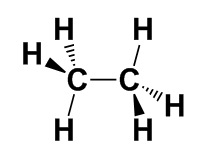

Conformations of Alkanes
Conformations are different forms of a molecule, related by simple rotation about a single bond. Such interconversions are usually very rapid, so that a sample of a given molecule may exist in many different conformations.
For alkanes, various conformations can be represented by using dash-wedge notation in a structural "perspective" drawing. An alternate depiction is a Newman Projection, which views a molecule by looking down a C-C bond axis: a carbon at the "front" end of the C-C bond is drawn as a circle, with its remaining three bonds shown as lines outward from the centre at angles of 120°. The three bonds attached to the "back" carbon are drawn as lines extending from the edges of the circle, suggesting their connectivity to the C atom hidden behind the front atom. In this way, the relative alignment of the bonds on each C is clearly shown.
Ethane
This conformation of ethane is the staggered form. The various hydrogen atoms on the front carbon form a dihedral angle of 60° with those on the back carbon, so that the C-H bonds on each carbon lie in between those of the other.
 |
 |
This conformation of ethane is the eclipsed form. The hydrogen atoms on each C have a dihedral angle of 0°, so that the C-H bonds of each carbon lie in the same plane as those of the other.
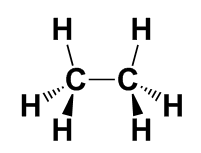 |
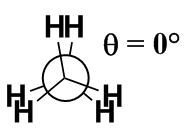 |
The staggered conformation of ethane is more stable than the eclipsed form by 12.1 kJ/mol, so that as one methyl group rotates 360° relative to the other, the compound passes through three stable staggered conformers via three unstable eclipsed forms. This barrier is small enough that at 25°C the compound changes conformation about 40 million times each second!
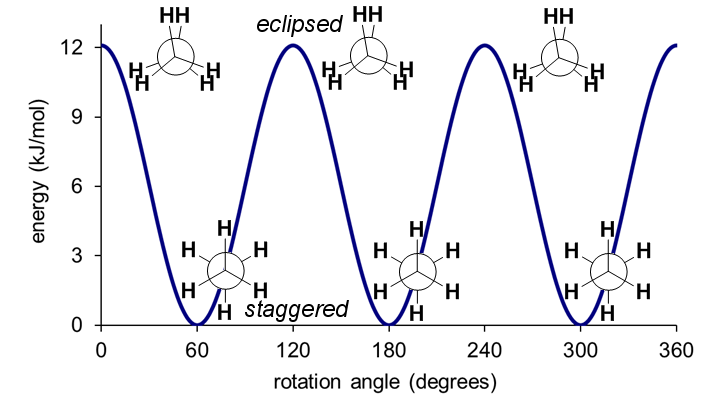
Butane
Butane has not only eclipsed and staggered conformations, but also forms that vary in the relative orientation of the methyl groups.
| anti | eclipsed | gauche | fully eclipsed |
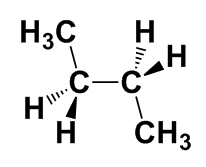 |
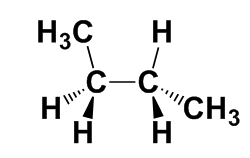 |
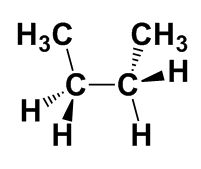 |
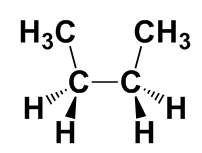 |
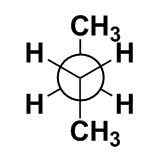 |
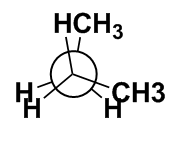 |
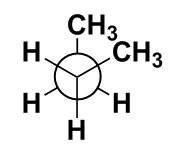 |
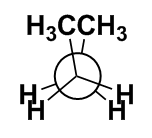 |
| Relative energy: 0 kJ/mol |
+15.9 kJ/mol | +3.8 kJ/mol | +18.8 kJ/mol |
| anti | eclipsed | gauche | fully eclipsed |
| As with ethane, the eclipsed conformations are higher energy than the staggered. The staggered conformation where the two methyl groups are as far away from one another as possible (with a dihedral angle of 180°, seen in the Newman projection) is called the anti conformation, and is the lowest-energy arrangement. The two staggered forms with the methyl groups in closer proximity (60°) are the gauche conformations. Direct interconversion of one gauche form to the other requires passing through the highest-energy eclipsed form, where the two methyl groups are next to each other. A space-filling representation of this conformation shows that the methyl groups are physically touching, leading to the high energy. |
fully eclipsed |
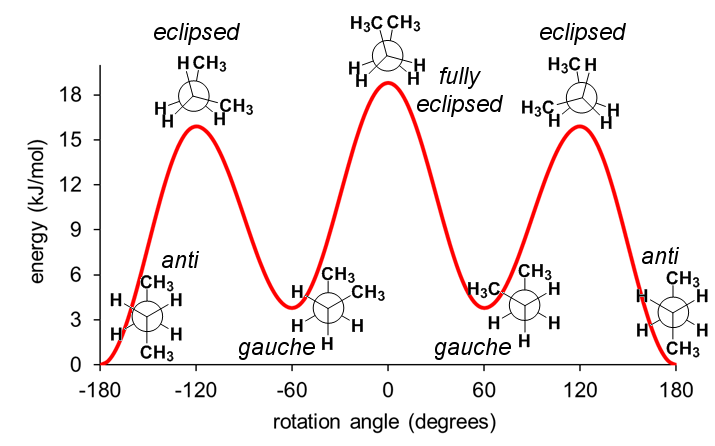
This page is maintained by W. Stephen McNeil.
.